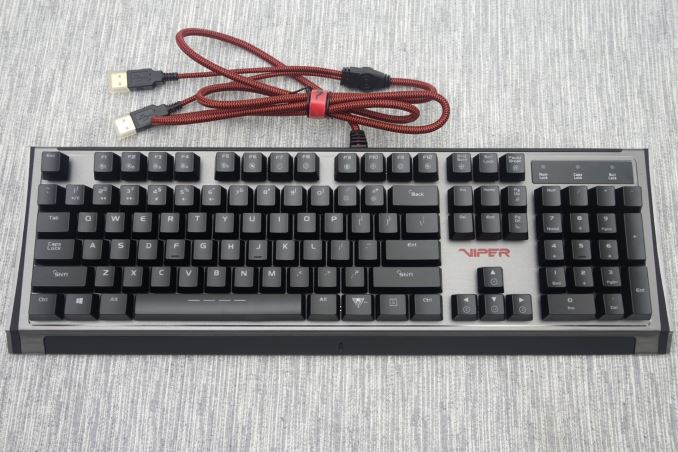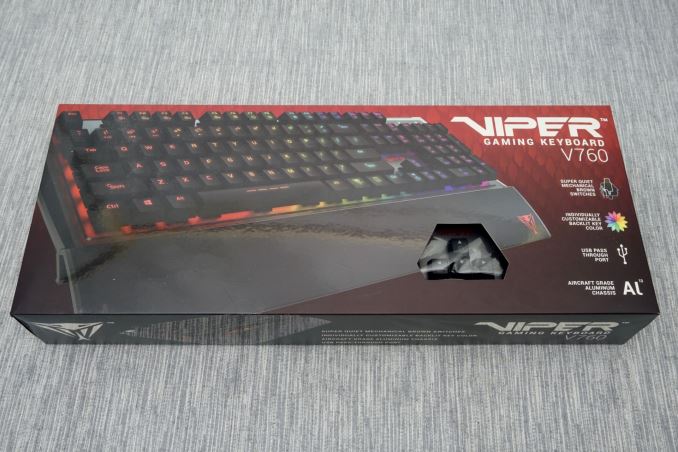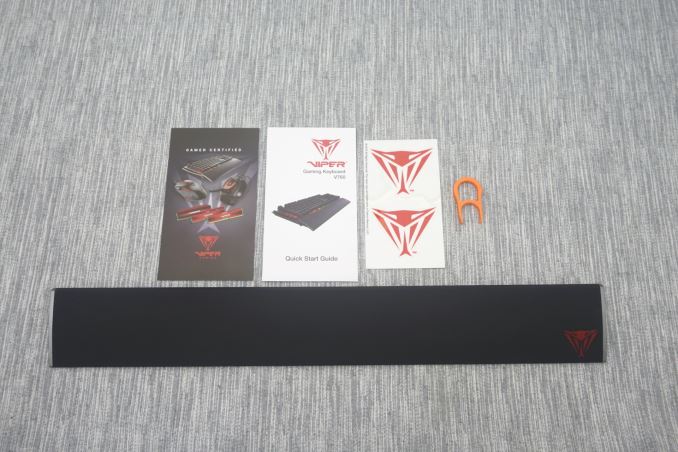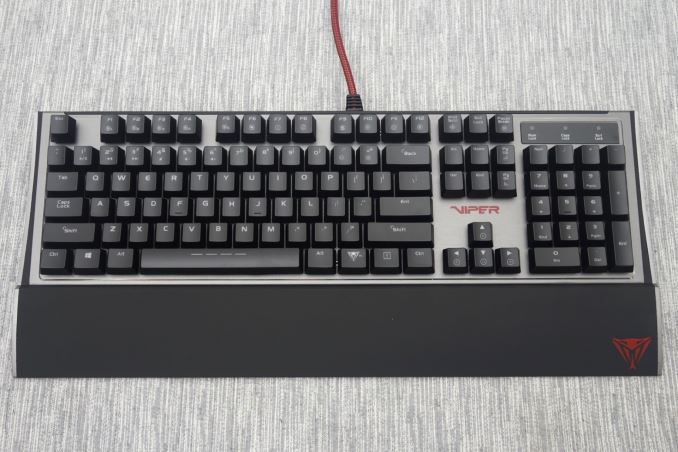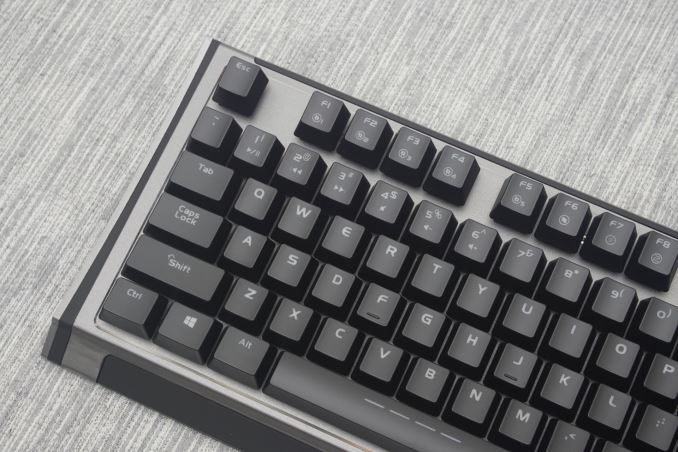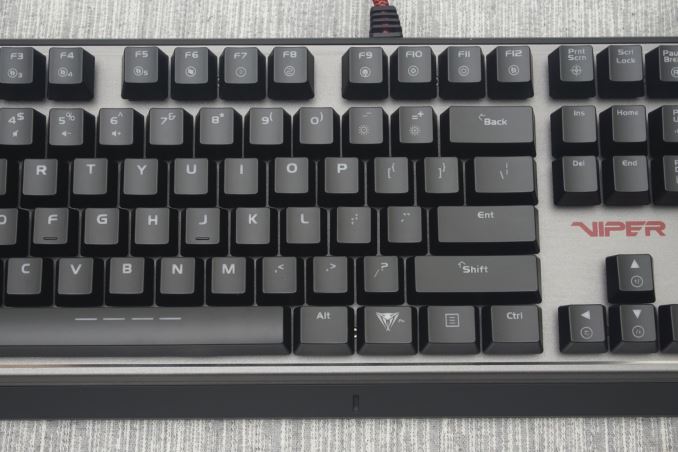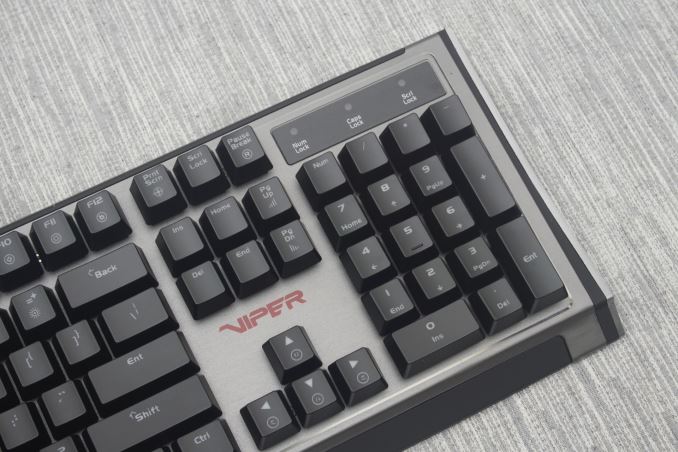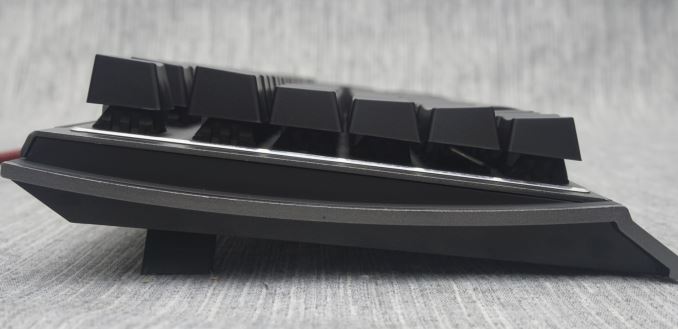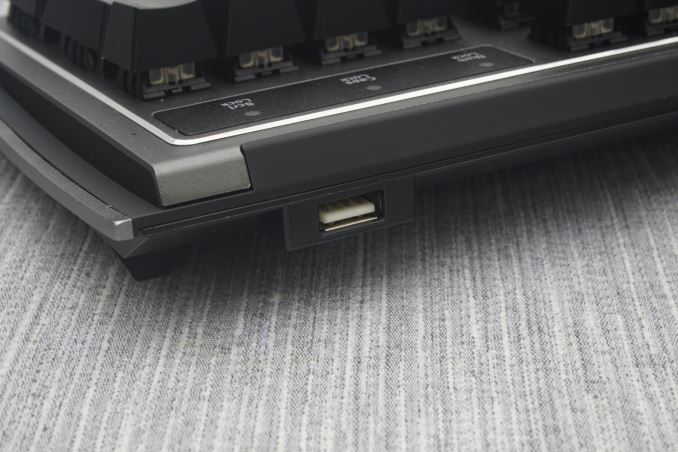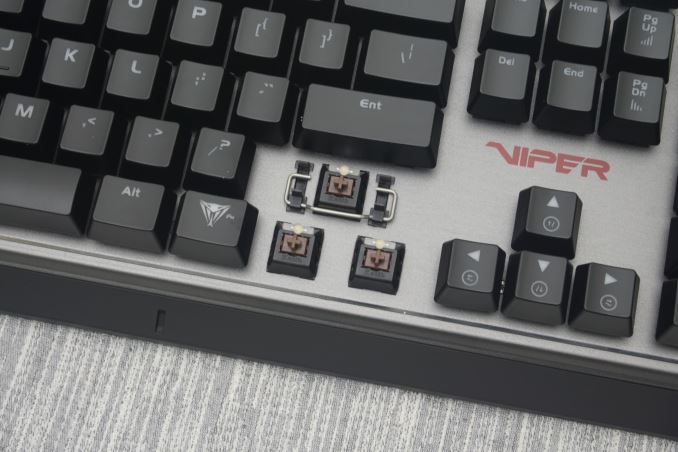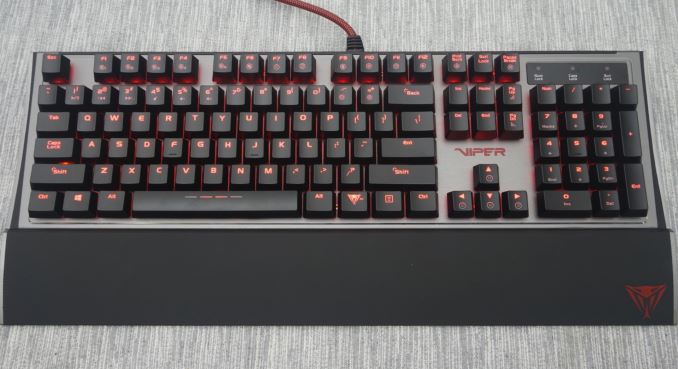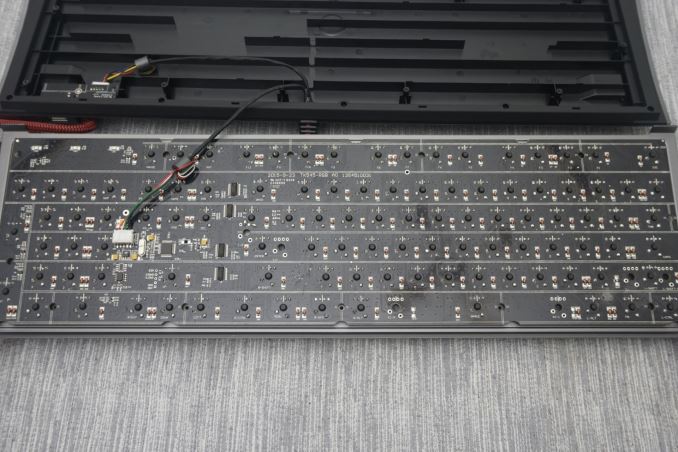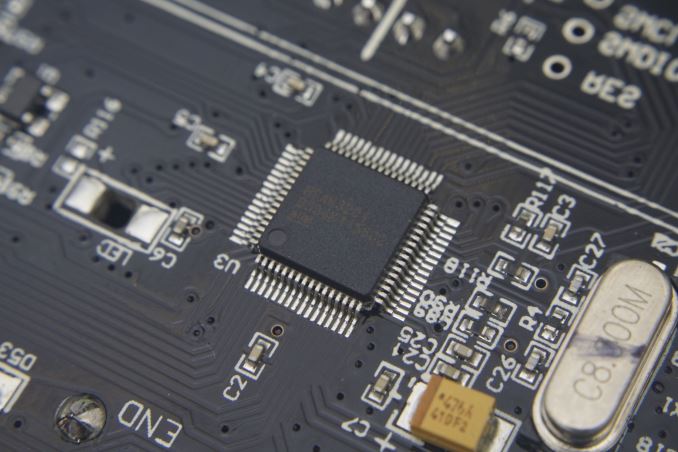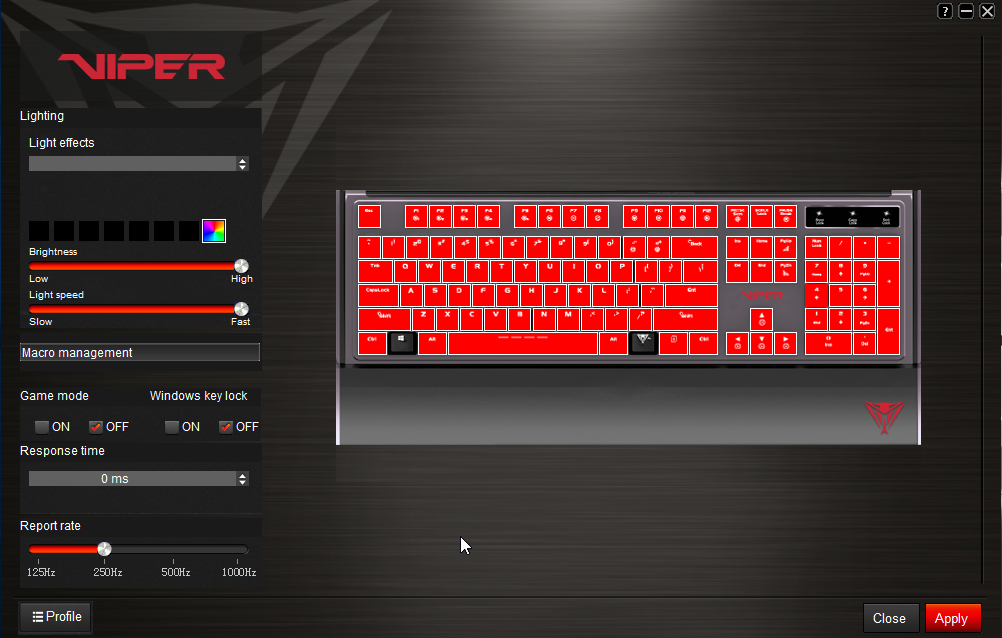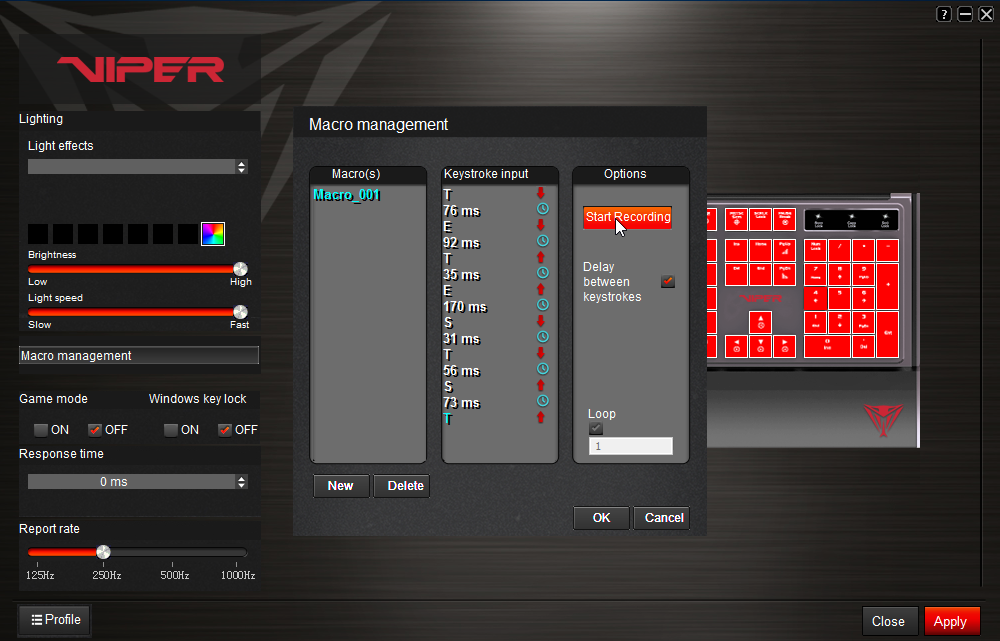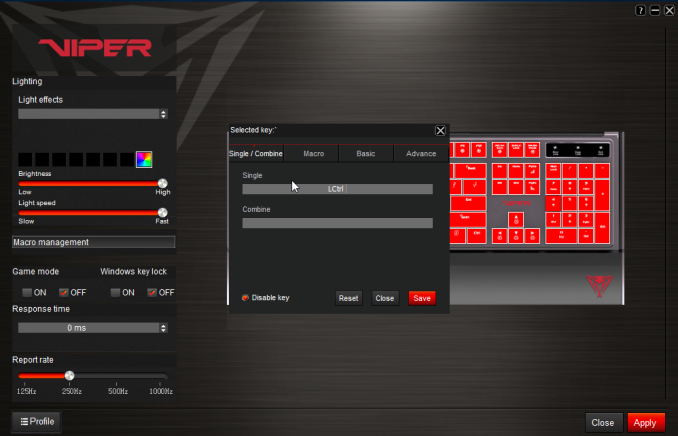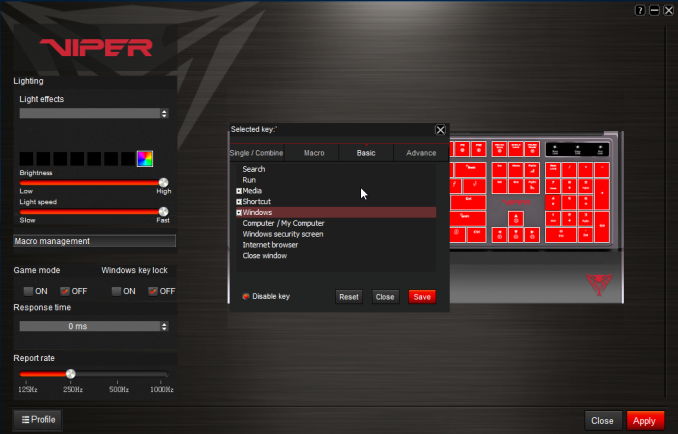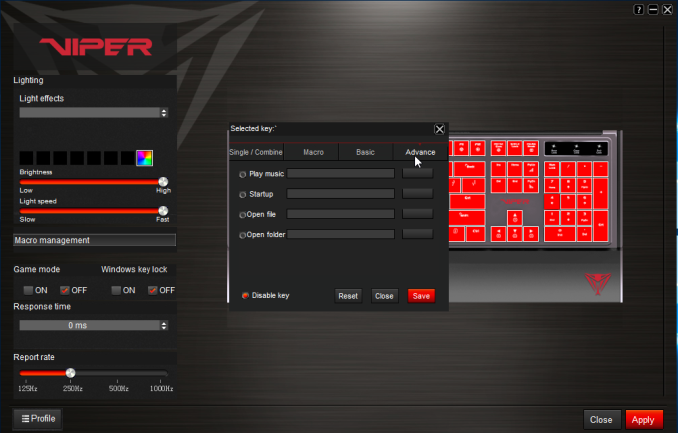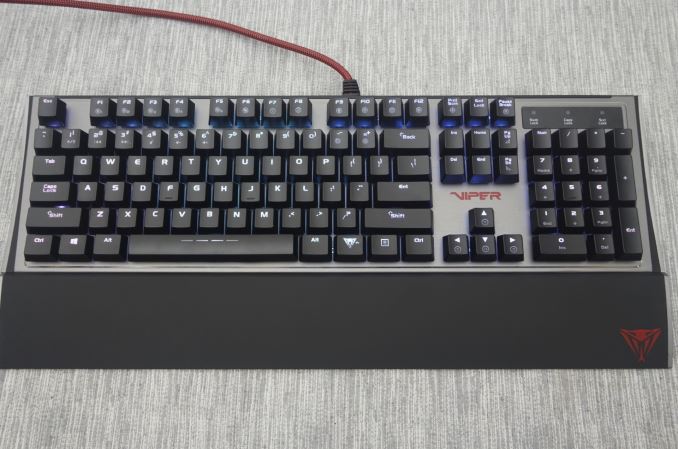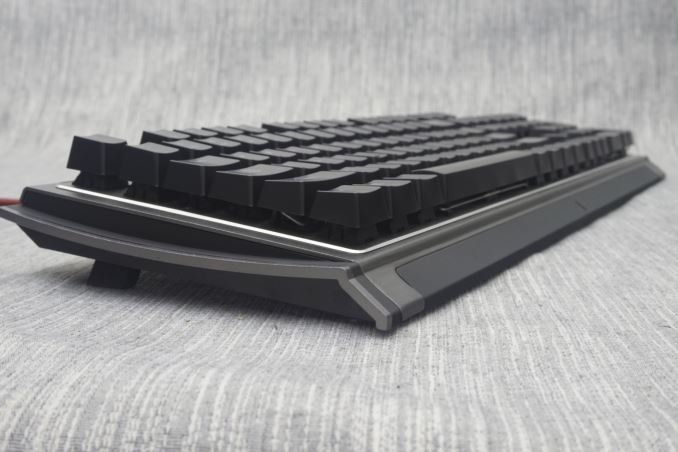
Original Link: https://www.anandtech.com/show/10177/patriot-viper-v760-keyboard-review
The Patriot Viper V760 Mechanical Gaming Keyboard Review
by E. Fylladitakis on May 5, 2016 10:00 AM EST- Posted in
- Peripherals
- Keyboard
- Patriot
- Mechanical Keyboards
- Kailh
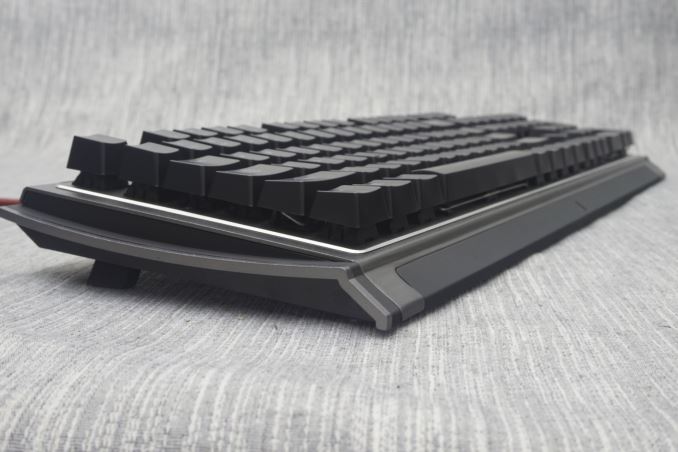
Nearly every PC component company is now coming out with their own line of gaming peripherals, and Patriot, the known manufacturer of memory-related products, decided to jump into the bandwagon with the release of one keyboard, one mouse and one headset. In this capsule review we are going to have a close look at one of the trio: the Viper V760 Mechanical Gaming Keyboard.
Introduction
On paper, the Viper V760 shares a familiar featureset to several similar mechanical keyboards available, all sharing an aluminum chassis, per-key programmability and RGB lighting. The price tag of the Viper V760 is what makes it very intriguing, as the keyboard can be found retailing for just $100 including shipping. This is lower than what most well-known manufacturers ask for their non-RGB programmable models, so Patriot’s strategy is to substantially outprice the competition. This might suggests that sacrifices were made, and we will find out where in this review.
Packaging and bundle
We received the Viper V760 in a large, thick cardboard box, perhaps a little excessively sized for the protection of the keyboard. The artwork on the box is simplistic, focused on pictures of the keyboard itself. There is a little window for brick-and-mortar store browsers to try the keyboard’s Kailh Brown switches.
Patriot supplies the Viper V760 with a full size palm rest, a quick start guide, two large “Viper” logo stickers and a keycap puller. Even though Patriot does not supply extra sets of keycaps in the bundle, the puller is a welcome addition.
The Viper V760 Mechanical Gaming Keyboard
Patriot went with the combination of an aluminum upper half and a plastic lower body, which is popular arrangement for top tier mechanical keyboards. In an attempt to differentiate their product, Patriot went with a more aggressive design than the common subtle flat plate we are used to encountering, adding a rounded trim on the edges of the keyboard, and a very thin chrome strip surrounds the top of the keyboard. The aluminum parts are brushed and silver, while the plastic parts are all black. A metallic strip has been installed beneath the plastic front of the keyboard, in order for the magnetic palm rest to be attached as aluminum does not react to magnets.
The Viper V760 is a standard full-size keyboard, without any extra keys and switches. It follows the standard ANSI 104 key layout, with the exception that the right “Windows” key has been replaced with an “Fn” key that has the Viper product series logo printed on it. There are no extra keys or volume control wheels/knobs.
When the Fn key is being held pressed, some of the keyboard’s keys will actuate special commands. Fn + 1-3 keys perform basic media functions, Fn + 4 is the mute command, Fn + 5/6 are the volume up/down commands, Fn + F1-F5 switch between five pre-programmed gaming profiles, Fn + F6-F12 keys control the backlighting, Fn + -/= control the backlighting brightness, Fn + the arrow keys control the direction of the backlighting, Fn + PgUp/PgDn control the lighting effect speed and, finally, Fn + Pause resets all of the settings.
The stock keycaps of the Viper V760 are made from ABS, are cylindrical, and have normal size characters printed on them. In an attempt to fix the common problem where the backlighting illuminates only the main character of the keycap, Patriot moved the secondary characters to the top right corner of the keycaps. This position might cause confusion at first, but it should not affect anybody with a little experience.
At the right back side of the keyboard, we find one USB 2.0 pass through port. This is commonly useful for gaming mice, or just for quick access to an external disk or flash drive.
Removing the keycaps, we find that the Viper V760 is based on Kailh switches. Our sample came with brown switches. Kailh’s products are a direct copy of the Cherry MX switches, with the exact same specifications and behaviour, meaning that the brown switches of our sample are (or should be) exactly the same as Cherry’s MX Brown tactile switch. We shall check their performance during our quality testing in the following pages.
Unlike Cherry’s approach, Kailh is using metallic stabilizers for the larger keys. These can cause the keys to wobble if not properly applied, but this is not the case with the Viper V760, where the keys felt just as stable as with any Cherry MX based board. The only real downside is that the larger keycaps are not as easily removable, as they have to be carefully removed from the stabilizer, whereas Cherry’s approach allows for the keycaps to come off just as easily as with any other key.
The RGB lighting is performed using an LED array mounted at the top of the switch, just like a single LED would be. Kailh is not using clear switch bodies like Cherry does, so the lighting is not being diffused around the key. It is primarily focused on the key’s characters, but some does spill around the keycap, mainly towards the top of each key. Patriot also lengthened the Spacebar’s opening, which seemed like a nice idea at first, but the single LED is actually illuminating only the centre of it, causing a visual dissonance.
Tearing the Viper V760 apart reveals the black PCB of the keyboard, which is supported by the top aluminium frame of the keyboard. In the past we've seen Kailh assembly jobs be a little messy, but not this time, with the PCB of the Viper V760 being very clean and virtually immaculately made, with a textbook soldering job and no flaws to be found.
The keyboard is using an HSAK3201 ARM processor and HSAK021 LED drivers. Bluntly put, we have no idea what their specifications are or even where these came from, as no information about the chips or their series can be currently found online.
Quality Testing
In order to test the quality and consistency of a keyboard, we are using a texture analyser that is programmed to measure and display the actuation force of the standard keyboard keys. By measuring the actuation force of every key, the quality and consistency of the keyboard can be quantified. It can also reveal design issues, such as the larger keys being far softer to press than the main keys of the keyboard. The actuation force is measured in Centinewton (cN). Some companies use another figure, gram-force (gf). The conversion formula is 1 cN = 1.02 gf (i.e. they are about the same). A high quality keyboard should be as consistent as possible, with an average actuation force as near to the manufacturer's specs as possible and a disparity of less than ±10%. Greater differences are likely to be perceptible by users. It is worth noting that there is typically variance among keyboards, although most keyboard companies will try and maintain consistency - as with other reviews, we're testing our sample only.
The machine we use for our testing is accurate enough to provide readings with a resolution of 0.1 cN. For wider keys (e.g. Enter, Space Bar, etc.), the measurement is taking place at the center of the key, right above the switch. Note that large keys generally have a lower actuation force even if the actuation point is at the dead center of the key. This is natural, as the size and weight of the keycap reduces the required actuation force. For this reason, we do display the force required to actuate every key but we only use the results of the typical sized keys for our consistency calculations. Still, very low figures on medium sized keys, such as the Shift and Enter keys reveal design issues and can easily be perceptible by the user.
The performance of Kailh’s Brown switches is in line with what we've seen on previous products. Kailh’s products lack the tighter consistency of its competitors, with our instrumentation showing a disparity of ±8.77% on the main keys. Most of the keys that are more than 10% from the average are, as one would expect, the larger keys in play, such as the shift, tab, enter and space bar. Due to the large key size, this is usually not high enough to be perceptible by the vast majority of users, especially with brown switches, where the actuation point is after the tactile bump that requires significantly higher force to overcome anyway. Although Kailh does not seem able to match Cherry’s manufacturing quality, we cannot claim that our results are bad or in any way problematic for users.
Patriot also claims something else about these switches - that they are silent. It is known that mechanical switches generally are not silent, generating noise when they bottom down and when they are reset. Some switches, such as the tactile blue switch, also generate noise when they pass their pressure point. We believe that Patriot wanted to say that the keyboard is silent for a product with tactile switches. True enough, the brown switch does not make any clicking sound when it passes the pressure point, but it is just as loud as any other switch when it bottoms down or when it resets.
Software
Patriot took a peculiar approach with their software, trying to fit everything into a single screen. All of the options are stacked to the left side of the screen, with the lighting options starting at top. There are ten pre-programmed lighting effects that the user can choose from, as well as static and per-key lighting that can be manually programmed as well. Two bars can adjust the intensity of the backlighting and the speed of the lighting effects.
Beneath the lighting options, there is a macro management button that pops up a secondary screen with the programmed macros. A virtually infinite number of macros can be performed, but the software’s capabilities are very poor. Only keyboard keystrokes are being registered, with the options of recording the delay between the keystrokes and setting a number of loops to each macro. There are no options to manually edit the macros or to insert any mouse-related options, similar to basic macro software that comes with motherboards. In short, the macro recording capabilities are very limited and all advanced users will definitely require third party software for the programming of macros.
Each key can be individually programmed, allowing the creation of multiple different modes. The user can select from single or combined keystrokes, programmed macros, basic windows functions (e.g. media command, default browser launching, etc.) and advanced functions. The advanced functions virtually are just the launching of an external music file, application or folder. Finally, keys can be entirely disabled as well.
Finally, there are two options having to do with the keyboard’s controller, and these are the response time and report rate of the keyboard. If there are no compatibility problems, the report rate should be left to its maximum.
Conclusion
I always try to use every keyboard that we review as my personal keyboard for at least a week. My typical weekly usage includes a lot of typing (about 100-150 pages), a few hours of gaming and some casual usage, such as internet browsing and messaging. The brown switches of the Viper V760 were ideal for such tasks, being very comfortable to continuously type on and quiet enough not to be bothersome, which can be very distracting when working late at night.
For gaming, the Viper V760 left me with mixed feelings. The keyboard itself is very comfortable and responsive, but the software needs considerable work. Thankfully, the capability to reprogram every key allowed me to program macros compiled with third party software to the keys, otherwise it would not be possible for me to program any usable macros with the company’s software. Aside from the (lack of) macro programming capabilities however, we also encountered several other issues, such as the software failing to start alongside with Windows 10 a couple of times, as well as hanging while programming the keyboard. These are clearly bugs that may be corrected in future versions of the software, but they will certainly frustrate some of the early adopters. It is suggested that users pull the latest version of the software to ensure it is updated.
Physically, the Viper V760 is very well made, with a durable chassis and aesthetically pleasing design. We also found the magnetic palm rest to be very functional, allowing its very quick attachment/removal. The addition of the USB port is also a bonus. What the Viper V760 lacks is a volume control wheel or dedicated buttons, as the use of keystroke combinations are rarely convenient for such tasks.
In terms of functionality, the Viper V760 is very good, with per key programmability and RGB lighting. Dedicated keys for mode switching would be useful, but they usually are not of critical importance. What certainly is in need of improvement is the software, as it is oversimplified for such a high tier product.
The biggest advantage that the Viper V760 has is its price tag. A very well made, fully programmable aluminum keyboard with mechanical switches and RGB lighting for $100 is not easily found. Similar products using Cherry’s products can be nearly twice as expensive. For users that feel they do not need anything more than a durable 104 keys programmable keyboard with RGB lighting and believe that the oversimplified software will be satisfactory for their tasks, we believe the Viper V760 is a wise choice and will certainly make a fine addition to their desktop.

